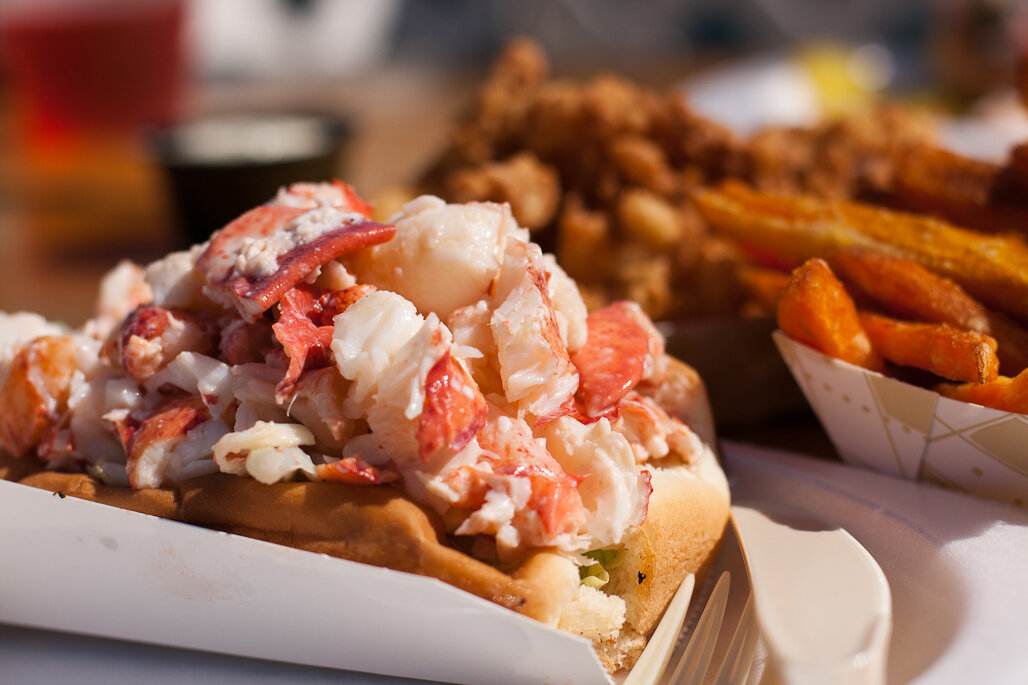Cuisine and Culture: Savoring Canada's Legendary Staples
Canadian cuisine has been around for over 150 years and you’ll see how traditional dishes can vary depending on cultural influence from coast to coast! From French-Canadian influences in Quebec to more a Euro-Jewish heavy influence in Montreal, you’ll gain a sense of how culture and local staples intertwine across Canada.
Let’s uncover a few of these dishes and their importance to Canadian history!
Sugar Rush
During past programs where EdOdyssey has visited Canada with students, the maple syrup experience has given students unforgettable insight into the production of one of Canada’s staple items! Students visited a local sugar shack to learn how maple syrup is first collected, and got to better understand why the maple leaf earned its place on the country’s flag. These sugar shacks are very popular attractions, especially during early spring in Quebec, when there is plenty of fresh maple to taste (Alston-O’Connor 30)!
According to Taste of Home, “Quebec produces an astounding amount of syrup each year: 7,989,000 gallons”. In order to produce one gallon of maple syrup, 40 gallons of maple sap needs to be boiled down in sugar shacks.
Interested in a sweet experience? The tire d’érable (or maple taffy) is a candy prepared “by pouring boiling maple syrup over snow...You’re then meant to roll it up with a popsicle stick and enjoy immediately” (Guan).
One of Canada’s favorite desserts, nanaimo bars, were founded in the 1950s in British Columbia. This no-bake, irresistible dessert bars consist of rich “crumb mixture, vanilla-flavoured butter icing, and melted chocolate” (Lev). Additionally, the Giant Jos Louis Cake, features a giant red velvet cake sandwich “filled with a creamy marshmallow layer with a milk chocolate coating” (Furdyk).
Butter tarts, a sweet dish in Canada, are made of pastry shells filled with butter, sugar, egg, and syrup. This is an example of traditional Canadian cuisine, some believe it can be traced back to the 1600s, while others think it resembles sugar pies in Quebec or pecan pies in the U.S. (Lev).
Beavertails, which is flat cinnamon deep-fried dough, has an interesting name for such a delicious treat. Though it might not be traditional cuisine, it’s popularity has risen over the years. Various toppings like Nutella, peanut butter, and candies are quite popular to include on top. BeaverTails were first introduced in 1978 in Ontario by a husband and wife, and got its name from the dough resembling the tail of a beaver.
Infinite Ingredients in Poutine
Poutine, the world-famous Quebecois dish made of french fries, cheese curds, and gravy is multifaceted for locals and tourists alike. This starchy and feel-good order can be consumed as a late-night meal, afternoon snack, or anywhere in between!
Over time, the traditional poutine has transformed and morphed with an even wider variety of foods and purposes. Restaurants now are even featuring poutine in creative ways, such as breakfast poutines (with roasted potatoes and eggs), curry poutine (substitute the gravy for curry), and iced poutine (replacing the traditional dish for chocolate wafers, syrup, and ice cream) (Fabien-Ouellet 40).
Poutine has even started being offered as a dish at higher-end restaurants, especially in Montreal’s fine dining scene since the early 2000s, and the dish is even celebrated in “annual poutine festivals held in places like Ottawa, Toronto, Vancouver, Chicago, New Hampshire, and Quebec” (Fabien-Ouellet 34).
Did you know that poutine is considered a social dish?
This is meant to be eaten with others, which is why it’s common to see large portion sizes supplied with a multitude of forks (Fabien-Ouellet 30)! Speaking of social settings, the White House Chef in 2016 served poutine during the first State Dinner between President Obama and the Prime Minister of Canada, Justin Trudeau (Fabien-Ouellet 28).
Each poutinerie (poutine store) offers its own distinctive flavors, which means that each poutine experience varies! This makes the tasting not only unpredictable, but also intriguing!
Regional Dishes
French Canadian traditional foods, such as poutine, maple syrup, ham and pea soup, and tourtiere (meat pie) are rich and common to find in Quebec (Cadesky). Additionally, natives of Canada on the East Coast feast on all sorts of seafood, and the additional donair, “a shaved hot dog, served with a sweet milk and garlic sauce (it also comes as a pizza)” is in the same family as a classic kebab (Cadesky). Within the seafood scene on the East Coast, lobsters are famously found on a plethora of menus, the Nova Scotian lobster rolls in particular are a Canadian favourite (Guan).
Montreal features a unique deli-style tradition, due to the large community of Jewish influence in the city, and kosher-style steakhouses have become a Canadian staple since (Cadesky). In Montreal, there is also an abundance of ethnic restaurants, including Chinese and Japanese cuisine, due to a large multicultural influence in the city (Alston-O’Connor 9).
The bannock has been a key dish for decades. This classic is a type of a quick biscuit fry bread, which was adopted by the Indigenous people of Canada (Furdyk). Modern takes include baked and fried versions, which can be found in bakeries nationwide. If you’re interested in a more hearty meal, try the French Canadian tourtière, which is a savoury meat pie popular year round, and “pork, veal, beef and game are popular choices of meat to fill the pie” (Guan).
Craving an afternoon snack?
You might try chips during your next visit! There are chip flavors that can only be found in Canada! For instance, the all-dressed chips have, “tomato and onion to salt, vinegar, sour cream and BBQ. Ketchup chips and dill pickle chips are also mega popular flavours native to the Canadian junk food scene” (Guan).
Did you know that Canada is a leading producer of insect foods? Food-grade insect farms have started to expand in Nova Scotia and Ottawa to develop unique agricultural solutions and sustainable eating (Cadesky).
We hope you enjoyed this quick look into Canada’s cuisine scene! Gastronomy is a component of our custom programs that our students and staff highly enjoy. There’s plenty of education and delicious experiences that come with trying new foods from all over the world.
If you’re interested in designing a custom program full of interactive activities, such as cooking classes and tours, contact us today for more information to start planning!
Sources
Alston-O‘Connor, Jessa Riel. Consuming Culture: Negotiating Asian Canadian Identities Through Food Culture and Art. Concordia University Montreal, Quebec, Canada, Nov. 2011.
Cadesky, Lee. “Oh, Canada - Over 150 Years of Food and Culture.” Medium, Medium, 30 June 2017.
Fabien-Ouellet, Nicolas. Poutine, Mezcal And Hard Cider: The Making Of Culinary Identities In North America. University of Vermont, 2017.
Food Network, Brent Furdyk. “30 Iconic Canadian Foods You Can Make at Home: Food Network Canada.” Foodnetwork.ca, 26 June 2019.
Guan, Christina. “17 Traditional Canadian Foods You NEED to Try.” Hostelworld Blog, 30 July 2019.
Hansen, Kristine. “10 Surprising Facts About Maple Syrup.” Taste of Home.
Lev, Elianna. “10 Must-Try Canadian Dishes (and the Best Places to Find Them).” Reader's Digest.













